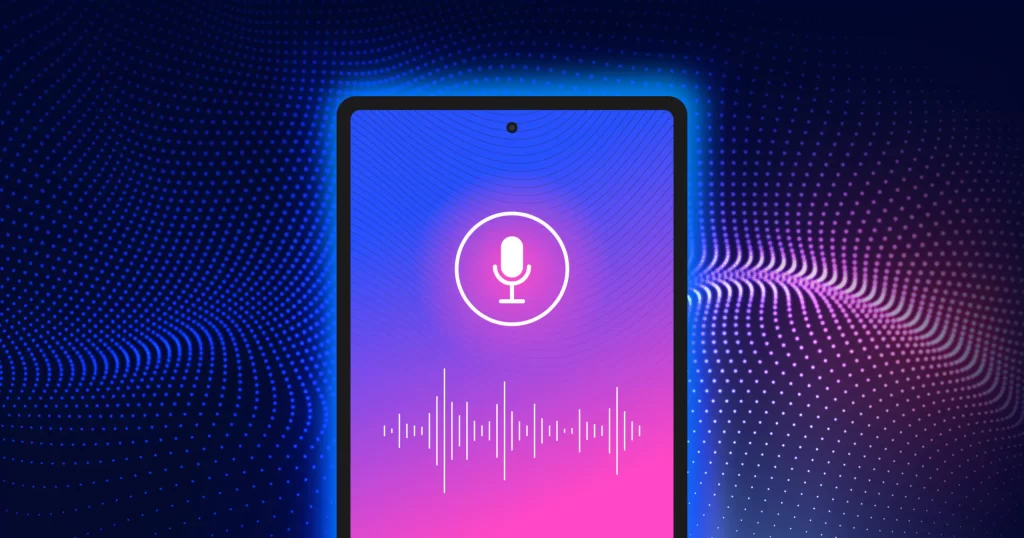
Ready to capitalize on the growing voice search trend? These tips and tactics help you update your content.
Voice search is regularly changing and adapting. As such, it makes for a moving target for marketers looking to optimize their content for voice search. You want to stay up to date with the latest technology and trends, but voice-activated devices are somewhat of a moving target. Learn what you need to know about voice search optimization and how consumers use this tool to find information.
Before we get into detail about how to optimize for voice search, here’s a better understanding of what it is.
Today, consumers can ask questions verbally and get verbal answers from their personal assistant devices. This might be a smartphone or a home device, such as Amazon’s products enabled with Alexa.
Instead of typing queries, which might use shorthand, abbreviations or other tactics to make typing the question simpler, the searcher uses common language as if they were asking a friend a question. These tools use Natural Language Processing and Automatic Speech Recognition to understand the question and deliver results.
When used in conjunction with a smartphone or device with a screen, the voice search results might also come with written language and links to learn more.
Voice search assistants are becoming a part of the average person’s routines. And they aren’t just using them for information. They are adding items to their carts, completing purchases and setting reminders to update their subscriptions. So no matter the products or services you sell, winning the voice search optimization game can mean more sales.
Voice search is not important just because people use it for purchasing. It’s also important because 62% of Americans are using these devices. It helps them answer questions, entertain their children, find new music or podcasts, and more. While all users aren’t completing voice searches frequently, most are. Research shows that 50% of consumers use voice search daily.
Although the most popular searches relate to weather and “near me” queries, users are learning the breadth of what they can use voice search to accomplish, giving it greater potential to impact your business.

Voice search optimization is the strategy of creating content that voice search devices deliver when answering commands. The content that you create for voice search devices will differ from what you create to optimize for visual searches because you want it to answer questions like how people ask them verbally.
Because voice search is looking for natural language responses, that’s how you want your content to appear. It focuses less on keyword usage and answers to text-based inquiries and instead aims to target the way people speak.
A great example of this is found in how people look for restaurants on search engines versus how they ask their voice-activated assistants for help.
When doing a text-based search, you might enter: Mexican restaurants near me.
But when you’re interacting with your voice assistant, you might say: What are the best Mexican restaurants in my area where I can order a chimichanga?
The search is more specific and offers more details. It doesn’t use the term near me because it doesn’t need to. It’s how you would ask another person for advice and recommendations instead of the shorthand for finding a listing of all restaurants in the area.
And as such, you’ll likely get one result from the voice search instead of a listing of the top 10 Mexican restaurants in your area.
That smaller number of results is another reason why voice search is so important. You have to be the first result, or you won’t show up in results.
Now you know the importance of voice search and the potential it holds for your business. Here’s a look at the steps you should take to optimize your site for voice search.
The faster your site, the easier it will be for voice assistants to return answers based on your content. You ideally want to get your webpages to load in one second or less to optimize your conversion rates and ensure that it is ready to accept voice search queries.
The more mobile-friendly and speedy your site is, the more likely it is to show in top results for text searches as well. So you’ll win on multiple fronts when you speed things up.
Avoid being too formal or writing text just to make a keyword fit. You want to write in a natural, conversational tone to attract voice search traffic.
When drafting content, also consider how you can answer queries quickly. So before you elaborate on the answer, provide it in simple language as if it were a 15-second elevator pitch. Then you can go into more detail for those who might read the content instead of hearing it from their voice search assistant.
Restaurants, stores and others looking to attract traffic to their brick-and-mortar locations should consider how local SEO could help elevate their website. Your profile is more likely to show up if you have solid reviews and high satisfaction ratings to be at the top of local search results.
Ideally, you want a star rating of 4.5 or higher. This will show that you are trustworthy. But your reviews also can’t be too old. You want to have a steady stream of new reviews, aiming for at least one per month. So create a strategy for encouraging reviews from recent customers.
At times, voice assistants might return results for your business even if you aren’t the closest result. That’s because you are a mix of the best results with proximity to the searcher.
As part of your reputation management tactic, you should respond to reviewers to show you are attentive to customers and their needs.
The more complex the query, the more likely it is to be coming from a voice assistant because it is using natural language. Target these phrases to help take advantage of voice search traffic.
As you go through your keyword research, look for the longer queries or those that are questions. For example, instead of “lawn treatment products” you might target the long-tail keyword “what lawn treatment products are safe for use with pets?” It’s both a question and a longer inquiry. While the search volume is likely smaller than the generic keyword, it will deliver better results for most businesses.
Voice searches often ask questions. As such, FAQ content is helpful in showing up in results. Voice assistants regularly pull content directly from FAQ pages because this content is generally succinct and to the point.
Consider what questions a user might ask related to your products and services and work to answer those questions in clear, concise language.
Search assistants want to know that you provide high-quality answers that are up to date. To do so, you need to update your content regularly to keep it from getting stale.
You can begin capturing voice search traffic now by following these guidelines. Not sure where to get started? Schedule a free consultation with New Light Digital. Our team has experience helping businesses rank for all types of search traffic. Whether you want to be found via text or voice search, we’re here to make that a reality.
Further reading: